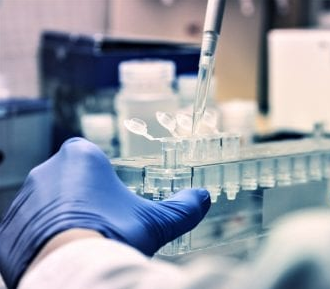A common and highly important chromosomal rearrangement is called a Robertsonian translocation. In this chromosomal rearrangement, two acrocentric chromosomes (chromosomes with the centromere near the end) join together along their entire long arms.
Meaning:
Structural chromosomal anomalies refer to deviations in the normal organization of chromosomes within an individual’s DNA. Robertsonian translocations are extremely rare structural chromosomal anomalies, occurring in around one out of every 900 people. These kinds of translocations take place on their own and are beyond the control of medical professionals.
Acrocentric chromosomes are affected by a Robertsonian translocation. The small region where the two halves of an acrocentric chromosome unite are located near the chromosome’s extreme end. During Robertsonian translocation, the two long arms of two distinct acrocentric chromosomes combine to form one chromosome. In most cases, the short arms disappear. This is occasionally referred to as centric-fusion translocation.
A kind of Down syndrome develops in a child who inherits the Robertsonian translocation. Additionally, there is a chance of giving birth to a child who develops Patau syndrome, a rare genetic disorder that results in catastrophic birth abnormalities.
Robertsonian Translocation Symptoms
Each cell in the human body contains a set of chromosomes, the smallest units of human genetic makeup. They provide the body with all the information it requires to form and function properly. Humans are born with 46 chromosomes, 23 from each parent. Each chromosome possesses both a short arm and a long arm.
Acrocentric chromosomes are those that feature a very short arm and no distinctive genetic material. They include chromosomes 13, 14, 15, 21, and 22.
In the majority of cases, a Robertsonian translocation does not manifest with symptoms or outward indicators. Depending on where the translocation occurs in one’s DNA, individuals may or may not experience any noticeable symptoms due to their abnormal DNA chain.
A translocation involves a break in the short arm of two of these five chromosomes. The damaged acrocentric chromosomes fuse, resulting in chromosomes with two long arms and no short arms.
Robertsonian translocations are possible because chromosomes always occur in pairs. These translocations result in a break in the DNA strand, but otherwise, preserve all of the necessary genetic information for cell division. Because of this, a large portion of those who suffer from this ailment lives their lives completely unaware of it.
However, people often become “carriers” of a Robertsonian translocation even if it does not cause any issues with their DNA. This means that there is a chance of passing on missing or excess DNA to the offspring. At this point, the situation becomes significantly more difficult.
Multiple miscarriages, infertility, and pregnancies in which the fetus develops trisomy or other genetic abnormalities indicate the presence of this translocation.
Robertsonian Translocation Causes
Robertsonian translocation is a hereditary condition. People acquire it from their parents, who in turn pass it on genetically to their offspring. Unique chromosomes are produced by translocations. A translocation is the transfer of a segment from one chromosome to a non – homologous chromosome or a different place on the same chromosome. Gene translocations result in the generation of chromosomes without the typical pairing partners and new linkage associations for the genes. Robertsonian translocation is the consequence of two acrocentric chromosomes fusing at the centromere, resulting in the loss of both of the chromosomes’ short arms.
All possible arrangements of acrocentric chromosomes exhibit Robertsonian translocations. In humans, a chromosome 13-14 translocation occurs in roughly 0.97 out of every 1,000 births.
Robertsonian Translocation Treatment
Robertsonian translocation rarely results in health issues or calls for medical attention.
People with the abnormality, on the other hand, mostly pass it down to their children. Before beginning a family, prospective parents often find it helpful to consult a genetic counselor. To assist prospective parents in making a decision, the genetic counselor is able to provide specific risks and benefits.
 Health & Care Information
Health & Care Information 


